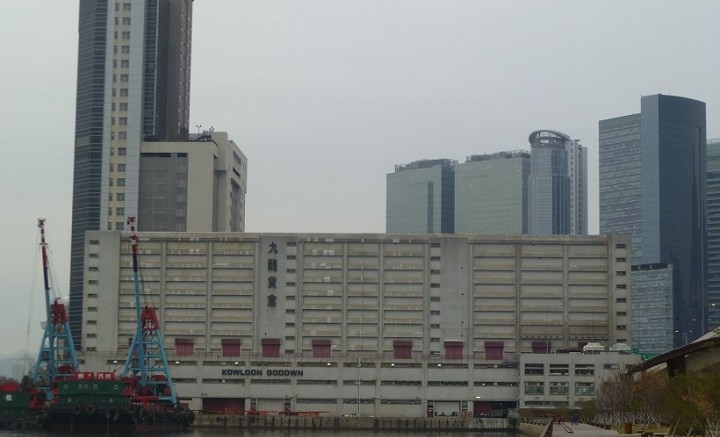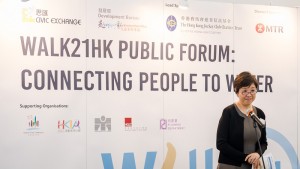By Maura Wong –
On May 19, 2016, over 200 people congregated in a container box-cum-exhibition hall in Ngau Tau Kok for a masterclass with world-famous architect Bing Thom on “How to Turn Waterfronts into Urban Treasures”. Outside the exhibition hall we saw the long stretch of Kai Tak’s runway – perhaps the last major piece of land in downtown Hong Kong that could be turned into an Urban Treasure. Bing Thom shared with us the experience of how Granville Park in Vancouver was transformed from an industrial manufacturing area into a top recreational hotspot well-loved by the residents of Vancouver and visitors from all over the world.
At the end of that session, friends and strangers came up to me telling me how wonderful it was to hear something so inspiring, fun and full of hope.
For those of you who missed this urban landscape masterclass, here are my notes from Bing Thom’s insights and advice which he so lovingly and generously shared with the people of Hong Kong.
- Don’t tear everything down!
Even if you are redeveloping, don’t demolish everything. Use history. People want to know the connection between the present and the past. Keep something that tells people where it all comes from.
Make, display and consume art!
- Let people see the process, not just the end products.
Let people see how a piece of pottery is made, not as a showcase, but in real life with all the failures and imperfections alongside the success. Let artists work on site with space for displaying their work. Let people ask the artist if the artwork is for sale. Witnessing how a piece of art is made turns owning it into a story.
- Don’t let the chains in!
In the original design of Granville Park in Vancouver, the peninsula was zoned into different areas based on intellectual concepts. One of these concepts and always a popular choice was the Public Market. From the outset it was decided that the Public Market should cater for unique persons rather than chain stores. The point was not to discriminate but to make the place distinctive and interesting. This concept has proven very successful. Some of these original shops have done so well that they have since grown into chains themselves and now Granville Park has to decide what to do with them.
- Build a visiting boat berth!
Let people take their boats from nearby places and visit or even stay the night (there is a hotel). The boats themselves are interesting for others to look at and this helps create a leisurely ambience for the place. Don’t forget to let in the boat repairers. People love to see people at work. We are interested in the lives of others.
- Use unlikely spaces
The special ambience under a bridge can make for an interesting restaurant scene. Use what is there. Do not disregard your surroundings. Do not build against it. Use it and celebrate it.
- Let in the kayak makers and the kayakers!
Anyone can kayak! Let people kayak near the restaurants. Let the restaurant goers and the kayakers watch each other and wave at each other. Let the kayak makers set up shops so people can see how the crafts are made. Then they may decide to take one out for themselves for a unique harbour experience.
- Celebrate the concrete kilns!
Granville Island had not been pretty in its previous life. It was a place for cement makers and storage yards. But no need to turn your back on that. Let the ugly concrete kilns stay. Turn them into art. Let the artists do their magic on the kilns.
- Do not overly design! Messy is good! Don’t sanitize everything!
What makes Hong Kong uniquely is that our best and most exciting often happens organically, not as a result of meticulous or central planning. We might leave some “t”s uncrossed and some “i”s undotted. The character of the whole piece is stronger nonetheless. We are a city that is built upon the faith in laissez faire. We believe in the creative force of a free economy and a free society. Give it just enough structure and let people do the rest.
- Let people get near and on the water!
Please! Get rid of the waterfront railings! Get rid of the inward-curving embankments that keep us away from the water. Instead, build steps down to the water. Make beaches along the harbour front. Let people dip their toes in the lapping water. Let people touch the waves. Give us the sensory experience that we crave.
- If you need to run ferries to Kai Tak, keep the ferries small. Make them easy to get on and off.
We don’t need industrial size ferries. Make them quaint. Make them human.
- Bring activity to the waterfront!
Leon Lai’s concert says it all. Bring interesting activities to the waterfront, and people will come – planned or unplanned. Water is the stage. It needs activity.
- Some areas need to be set aside for non-motorized boats.
It would be a real sanctuary to have in our harbour some quiet water for kayaking, paddleboarding and swimming. A swimming pool on the harbour front may not be such a bad idea after all. We could have a saltwater pool alongside the front twice the length of an Olympic-sized pool. It will be a draw. People will come from all over the world just for such a one-of-a-kind experience.
- Don’t build big imposing bridges to link Kai Tak to the rest of the city. Don’t build an elevated transport system on Kai Tak.
Use barges as floating bridges. Bring our “ding ding” trams. Design Kai Tak for people, not cars.
- Use barges as floating stages. Make them home for a local orchestra.
The orchestra can perform on the floating barges or they can sail to neighbouring places to perform. Both the music and the unique setting promise to be a big draw.
- Build it for the locals!
If the locals come, then the tourists will come too. But build it for the locals!
These are just some quick notes I frantically took down while listening to Bing Thom. Even without the aid of the inspiring pictures of Granville Park, do you share the hope that many of us felt as we listened to Bing’s presentation? But hope is not enough. We must turn hope into reality. Here is a workable blueprint for how to redevelop the Kai Tak runway well. Can we not “blow it” this time?
This is the concluding remarks made by Maura Wong, CEO of Civic Exchange, after the Walk21HK Public Forum: Connecting People to Water in Kwun Tong on May 22.
Photo: Pictures provided by Civic Exchange



Be the first to comment on "How to turn waterfronts into urban treasures"